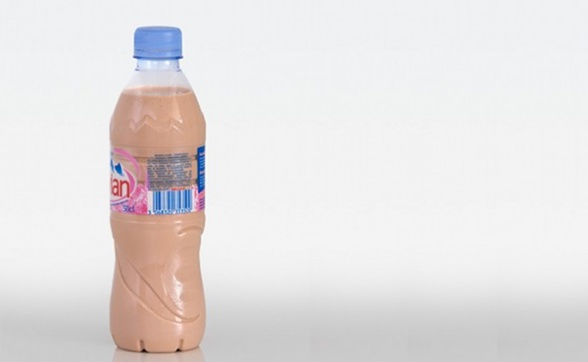| M | T | W | T | F | S | S |
|---|---|---|---|---|---|---|
| 1 | 2 | 3 | 4 | 5 | 6 | 7 |
| 8 | 9 | 10 | 11 | 12 | 13 | 14 |
| 15 | 16 | 17 | 18 | 19 | 20 | 21 |
| 22 | 23 | 24 | 25 | 26 | 27 | 28 |
| 29 | 30 | 31 | ||||
In collaboration with the Philosophy Department at the University of Liverpool, the Liverpool Biennial has invited artists and thinkers to bring a new understanding of hospitality for our times in relation to humanism, economy and the media.
Participants include: Pamela Rosenkranz, Artist, Liverpool Biennial Robin Mackay, Urbanomic, Falmouth John Hunt, Head of Clinical Engineering Research Unit, University of Liverpool
This workshop will integrate scientific, artistic and philosophical perspectives on the phenomenon of skin as human surface. In examining the biological history as well as the socio-cultural functions of skin, the discussions shall develop an approach to skin as cultural surface that seeks to trace its evolutionary products like for example nakedness as socially codified medium in order to ask about skin's technological, scientific, and artistic future. Discussing the far-reaching artistic, theoretical and ethical implications of the topic of skin moreover it addresses the question of the boundaries of the human and the non-human.
Pamela Rosenkranz works across a broad range of media including sculpture, installation, painting, video and photography to create a unique conceptual language. She manipulates highly recognisable objects and images, underpinning them with gestures to construct isolated moments and groupings. Spandex fabric, canvases, mops, nylon tights and Evian water bottles are imprinted, stretched and distorted to represent ideas through unstable realities and de-contextualised forms. This tactile process transforms the objects into physical beings, leaving bodily traces of flesh and touch.
Robin Mackay is a philosopher and director of UK arts organisation Urbanomic, which promotes research activities addressing crucial issues in philosophy and science and their relation to contemporary art practice, and aims to engender interdisciplinary thinking and production. His research interests focus on the ‘gap’ between scientific knowledge and humans’ spontaneous self-understanding, and the aesthetic and political ramifications of philosophical positions that attempt to resolve this disparity – in particular, new variants of ‘geophilosophy’, which negotiate the relationship between philosophical thought and the contingency history of the earth, in dialogue with geology, chemistry, and physics. As well as directing Urbanomic’s publishing operation and curatorial activities, Mackay is editor of Urbanomic’s publication Collapse: Journal of Philosophical Research and Development, each volume of which brings together philosophers, thinkers from other disciplines, and contemporary artists. He writes and speaks regularly on art and philosophy and has worked with several artists, including Florian Hecker, John Gerrard and Conrad Shawcross, developing cross-disciplinary projects. He has also translated various works of French philosophy, including Alain Badiou’s Number and Numbers, FranÀ§ois Laruelle’s The Concept of Non-Photography and Anti-Badiou, and Quentin Meillassoux’s The Number and the Siren.
John Hunt, DSc John Hunt is a Professor in Tissue Engineering & Regenerative Medicine and Head of Clinical Engineering in the Institute of Ageing and Chronic Disease of the University of Liverpool. He has academic interests in techniques to assess the cellular and molecular mechanisms of biocompatibility, tissue engineering and stem cells. He is one of the University’s Research Champions for the Materials for the Future Theme. He is associate editor for Biomaterials, subject editor for Biomaterials in Current Opinion in Solid State and Materials Science, member of the editorial boards for European Cells and Materials and International Journal of Adipose Tissue. Hunt has been exploring life with a number of artists working with bioart concepts and installations, such as John O’Shea who is an artist in residence in his labs http://pigsbladderfootball.com. He also worked with Jens Hauser as the technical science body helping to keep life in installations for the exhibition Sk-interfaces which showed at the FACT and the Casino Luxembourg (www.casino-luxembourg.lu/html_en/expositions/expoencours_skinterfaces.htm). For the exhibition of the Sk-interfaces at FACT he opened his laboratory doors to many of the artists requiring to bring their works to life. www.fact.co.uk/news-views/2007/12/sk-interfaces-launches-facts-2008-programme/.
Supported by School of the Arts, University of Liverpool

03 July 2012, 2PM - 5PM
LocationVictoria Gallery & Museum
University of Liverpool
Ashton Street
Liverpool
L69 3DR
Open Tuesday–Saturday 10am–5pm, Sunday 12–4pm, Free
Liverpool Biennial
55 New Bird Street
Liverpool L1 0BW
- T +44 (0)151 709 7444
- info@biennial.com
Liverpool Biennial is funded by
Founding Supporter
James Moores
